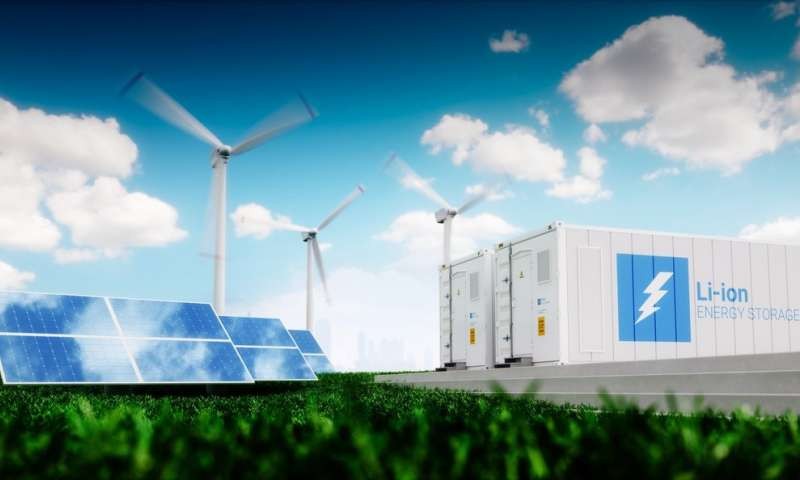More and more homeowners are now opting to install a solar system. Rising electricity prices are just as much a reason for this as a growing sense of responsibility towards the environment and the resources of our world. In addition, solar power systems have become increasingly cheaper in recent years, which has lowered the inhibition threshold for this investment.
Why an energy storage device?
To operate a solar system, not only photovoltaic modules, but also solar power storage systems are required. Theoretically, such a solar system could also be operated without energy storage, but this would have to accept significant disadvantages. In times of greatest solar activity, potential for generating electricity would be wasted, while at night times one would still be dependent on energy from the grid. A solar power system therefore only has full profitability with an associated solar storage system. Lithium phosphate batteries have gained increasing popularity in recent years as a storage solution for solar systems and are now appearing as an equivalent alternative to the well-known lead storage.
How lithium storage works
The electrochemical reaction that takes place in lithium batteries is comparatively easy to explain. During the charging process, the lithium ions migrate through an electrolyte from one electrode to another and stick there. When discharged, the lithium ions move in the opposite direction and thus release the stored energy again. The electrodes are usually made of graphite, but models with iron or cobalt conductors are also available on the market.
The advantages of lithium batteries
The advantages of lithium storage over other solutions are immense. On the one hand, they have a longer service life than lead-acid batteries. Current models can be used as electricity storage for up to 20 years. The number of possible charging cycles is also much greater than with lead-acid batteries. In addition, the lithium storage systems can be discharged deeper without suffering permanent damage. Modern lithium storage systems have practically no memory effect and have a low tendency to self-discharge. With the same amount of storage, lithium batteries are also smaller and lighter than lead batteries. As a result, they take up less space in the household and systems with a larger capacity can be installed with the same space requirement. The efficiency is also significantly higher than with lead-acid batteries. These can only store about 80 percent of the incoming electricity, the rest they release as waste heat to the environment. Lithium batteries today have efficiencies of 90 to 95 percent. Due to the superior energy storage performance of lithium batteries, they are widely used in solar powered generators. Since they do not outgas, unlike lead batteries, they do not have to be installed exclusively in well-ventilated rooms. By the way, AGM batteries are also lead-acid batteries.

The course of the day with a solar power storage system
Disadvantages of lithium-based batteries
However, these energy storage systems also have some disadvantages. The main reason for choosing against lithium-based photovoltaic storage systems is likely to be the high price. Currently, the cost difference between photovoltaic storage systems made of lead or lithium is about a factor of 2.5. However, this difference is compensated for by the almost twice as long service life of the lithium batteries (12v lithium battery, 24v, 48v), which only pays for itself after many years of use.
Of course, subsidies sponsored by the state, can reduce the cost of the purchase, but these advantages also apply to the cheaper batteries made of lead. The costs are caused both by the raw materials and by the complex charging electronics, without which this energy storage system would not be functional. By the way, lithium reacts strongly with air and water, which can lead to explosive reactions. The contained electrolyte is also flammable. However, undamaged solar power storage systems pose virtually no danger if properly treated.
Last but not least, the environmental balance of lithium batteries is not without problems. Lithium, as well as the metal cobalt, which is also required for production, are rare raw materials. In addition, they are harmful to health, so recycling lithium batteries is complicated. On the other hand, this type of battery can do its job for years without having to be replaced, so lithium storage systems need to be recycled much less frequently than their lead-based counterpart.
Result
Finally, there are many arguments in favor of lithium-ion storage as an alternative to the lead-based battery, especially since lithium storage systems are constantly becoming more powerful and better. However, their own rapid progress also has reason to hesitate: the development is far from over here. Lithium-ion storage prices have fallen by 30 percent in the last three years. Forecasts assume that price reductions of 50 percent are to be expected again by 2020. The storage densities and efficiencies of the batteries will also continue to increase, although a high level has already been reached here. Whether the purchase of a lithium storage system for your own plant already makes sense or whether it should first be relied on the cheaper lead storage system in order to switch to a better and until then cheaper lithium model in a few years is in the eye of the beholder. Suitable new or used variants as well as remaining stock, stock can be found in any case on the online marketplace of Renogy.






